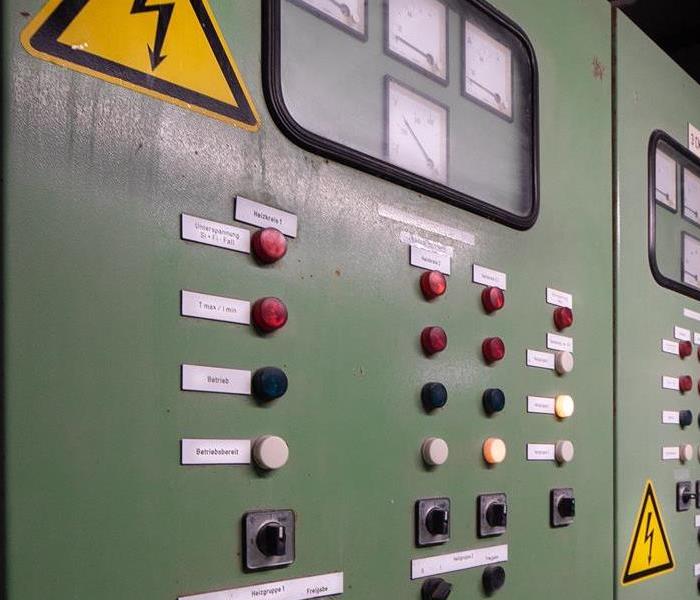Generator Safety During Storms
9/30/2021 (Permalink)
How many times has a generator restored a sense of normalcy to your life during or in the aftermath of a storm? Providing us with light, cold air in our refrigerators, the ability to charge our phones, and so much more, generators can be a lifesaver. The hope is that we don’t have to use our generators often, but as a result, how many of us feel confident that we have a sufficient grasp on generator safety? According to Consumer Reports, generators can pose safety risks, such as carbon monoxide poisoning and fire hazards, to residential and commercial properties alike, as well as those living or working in them. Here are our top generator safety tips to keep in mind during or after a storm.
- Keep Your Generator Outside
Storing your generator indoors, in a garage, or any enclosed space increases the risk of carbon monoxide poisoning. The American Red Cross recommends that generators should be kept away from windows and doors in order to further prevent carbon monoxide from entering your home or business. Out of an abundance of caution, it is also beneficial to install a carbon monoxide detector and alarm system in your residential or commercial property. These devices will alert anyone inside of the home or building of carbon monoxide so that they can exit the property immediately.
- Store Fuel in a Safe Location
Generators require fuel in order to power your home and in the event of a storm that may cut off your power for multiple days on end, you will likely need to stock up on extra fuel. When storing fuel, it is important to keep it in a cool space that is well-ventilated and outside of any living spaces. Generator fuel is a serious fire hazard, so it is critical that fuel is stored properly in a location protected from any items that may ignite fire.
- Consider Installing a Transfer Switch
The fire hazards associated with extension cords can be avoided with the help of a transfer switch, which connects your generator directly to your property’s circuit panel. It is dangerous to plug your generator into a wall outlet. This practice is also known as “backfeeding” and can increase the risk of electrocution. Transfer switches eliminate the need for engaging in this dangerous activity and can also prevent overloading, as they sometimes display wattage use levels.
SERVPRO Is Standing By
If you decide to utilize a generator to power your home or business after a storm leaves your property without power, be sure to exercise caution. Serious safety hazards, as well as significant risks to your property, accompany generator usage. Therefore, it is important to have an emergency plan in the event that generator usage leads to fire damage to your property. Our team of fire damage restoration experts will respond immediately when you are in need. Call SERVPRO of Hunt Valley and Harford County right away at (410) 229-0012 if your home or business experiences fire damage resulting from generator usage. Visit our website for an overview of our Storm Damage Restoration, Fire Damage Restoration, and Commercial Fire Damage Restoration services. We are standing by, ready to make it “Like it never even happened.”





 24/7 Emergency Service
24/7 Emergency Service
